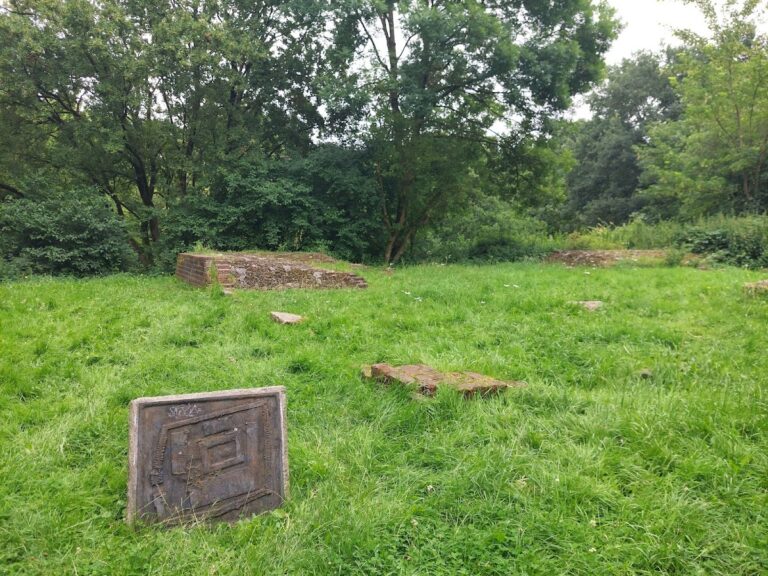Mansinger Burgplatz: A Medieval Motte-and-Bailey Fortress in Westerstede, Germany
Visitor Information
Google Rating: 4.1
Popularity: Very Low
Google Maps: View on Google Maps
Country: Germany
Civilization: Unclassified
Remains: Military
History
The Mansinger Burgplatz is located in Westerstede, Germany, and was originally built during the medieval period by the Counts of Oldenburg as part of their efforts to establish control over the Ammerland region. This fortification arose in the 11th and 12th centuries amid territorial conflicts with neighboring East Frisian groups. To secure their authority, the Counts relied on loyal knights such as the von Mansingen family, who served as ministeriales—unfree knights bound in service to their lord.
Documentation from 1226 marks the earliest recorded mention of the site, referring to both the castle and its outer bailey along with surrounding moats. The noble family Hammje, who were local to the area, influenced the castle’s later alternative name, “Hammjeborg,” a designation still remembered by residents. The von Mansingen lineage, identifiable by a unique coat of arms featuring a winged horsefly, is linked to the site through records spanning from the early 13th century until the late 14th century. Members such as Johannis de Mansenge in 1237, Nicolaus de Mansingen in 1259, and Luthbertus mile de Mansinghe in 1339 played roles documented primarily in property transactions and legal matters, confirming their longstanding stewardship.
In 1339, a significant religious foundation connected to the site was noted: the establishment of an altar dedicated to Saint Laurentius within the nearby church at Apen. This devotional act reflects the spiritual ties and communal aspects associated with the noble family and the local population during the middle ages. Centuries later, this historical detail inspired the creation of an ecumenical artwork named “Freialtar” at the Burgplatz in 2013, marking the memory of the altar’s founding.
Excavations carried out in 1969 uncovered pottery shards dating from the 12th through to the 14th or 15th centuries, corroborating the timeframe represented in the written sources and connecting the material culture to the period of von Mansingen prominence. In modern times, the surrounding area was officially protected in 2003 to preserve both the castle ruins and landscape for their cultural and historical importance. Folk tales also linger around the site, including a legend of a hidden treasure buried within the castle mounds, said to be unreachable due to paranormal interference attributed to the devil, adding a layer of myth to the site’s long history.
Remains
The Mansinger Burgplatz is constructed as a typical motte-and-bailey fortress, a medieval defensive design featuring a raised earthwork (the motte) and an enclosed courtyard or outer bailey, each positioned on separate raised mounds. These mounds are divided by a water-filled moat, which alongside a larger moat encircling the entire complex, served to impede attackers. A second moat enclosing the site is faintly visible on the northwest side, hinting at additional defensive measures.
The outer bailey rests on a mound approximately 1.5 meters high and is uniquely divided by a secondary moat, which gives the impression of three distinct mounds arranged in a manner reminiscent of the nearby Burg Elmendorf site. The main mound rises to around 2 meters in height, featuring a flat top measuring about 19 by 23 meters, providing a plateau likely used for the main defensive or residential structures in the castle’s active period. The outer bailey forms an irregular trapezoid shape roughly 37 by 54 meters in size, indicating a substantial enclosed area for ancillary functions such as stables, workshops, or living quarters for retainers.
Located within a scenic moorland environment, the site’s visible earthworks—including multiple mounds and surrounding moats—remain prominent features despite their age. Archaeological investigations have yielded medieval ceramic fragments consistent with the known periods of occupation but have not uncovered detailed architectural elements such as building foundations, inscriptions, or ornamental features. In recent years, the presence of the artistic “Freialtar” installation at the site commemorates its religious historical connection and adds a contemporary cultural dimension to the landscape.
Local oral traditions about the site mention a hidden treasure said to be concealed within the castle mounds, though this treasure has never been recovered due to supernatural forces attributed to the devil’s interference. This legend reflects the enduring fascination with Mansinger Burgplatz and underscores its layered historical and cultural significance.







